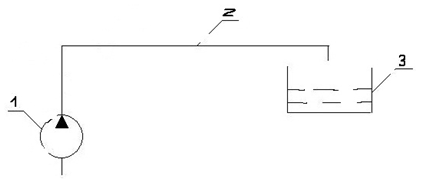Abstract
Содержание
- Introduction
- 1. Theme urgency
- 2. Goal and tasks of the research
- 3. Calculation of water hammer and a review of research on this topic
- Conclusion
- References
Introduction
Among the basic sectors of Ukrainian economy, energy is dominant. Ukraine is the largest consumer and producer of energy. By electricity consumption Ukraine is second only to the most developed countries of the World: U.S., Russia, Japan and Canada.
Nowadays the potential power system of Ukraine is 44 thermal power plants (TPP), of which 14 large. In the Donetsk region, there are seven stations. The share of TPP in the total installed capacity of the industry in the period before 2030, will preserve at the level of 50-60%. The importance of these technological objects is obvious [8,9]
Water hammer is a sharp increase or decrease of pressure in the pressure pipe due to changes in the velocity of the fluid in it.
Accordin to experts, causes of accidents (pipe breaks) to the power station are:
- 25% – corrosion processes;;
- 20% – force majeure circumstances .
For a timely response to possible emergency situations (breaking lines) necessary to control the technological parameters of the pipeline system: flow and speed of fluid, pressure. The most critical of these is the water pressure.
1. Theme urgency
Currently, fuel and energy complex of Ukraine is going through a complex condition that is associated with the global crisis, low investments in the energy sector, the aging of power equipment. Sudden need for technical and technological renovation, upgrading and repair of production facilities and infrastructure of Ukrainian thermal power plant. Of the 14 Ukrainian thermal power plants, 7 were designed more than 50 years ago. Obviously, the thermal power plants (TPP) has long been worn out. An urgent task was to ensure their trouble-free operation.
2. Goal and tasks of the research
Develop, justify and investigate the structure of an electronic system that provides automated control of process parameters flowing in piping systes.
Main tasks of the research:
- Analysis methods for measuring water hammer in the piping system of thermal power plants.
- Development of a mathematical model for measuring the parameters of water hammer.
- Substantiation of structure of the channel pressure.
- Operational monitoring of operating modes of pipeline systems and forecasting of water hammer on the basis of the results obtained by methods of mathematical modeling.
Research object:
pipeline system at the power station.
Research
subject:
control of process paramters (pressure, flow rate and fluid velocity)
in the pipeline.
3. Calculation of water hammer anda review of research on this topic
During the conducting research and calculations of water hammer, were formed by the factors on which it depends are: the length and type of pipe material and geometry of the tubes, transported medium, the variation of flow rate, etc. [5]. In order to take into account all the factors that affect the hydraulic impact, need to use the method of characteristics. The simplest hydraulic (pipeline) system is given by Figure 1.











